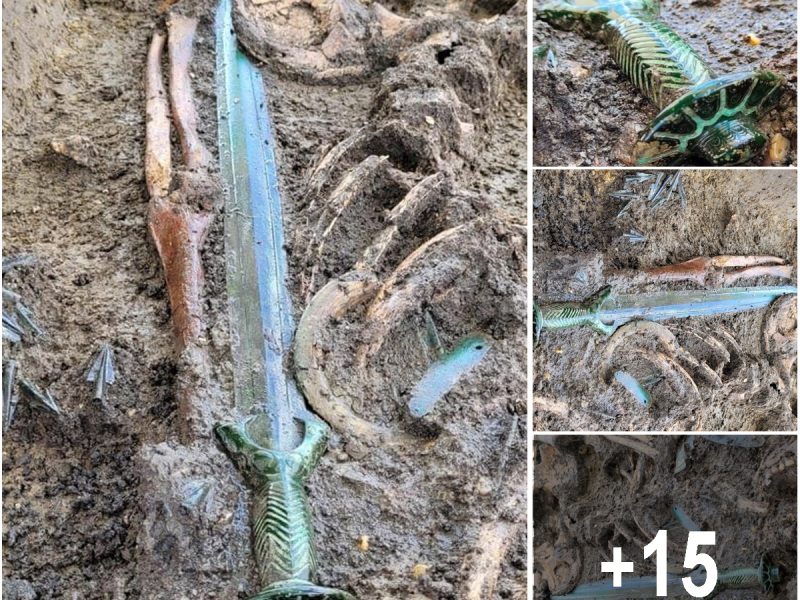Chinese scientists in the Guangxi Zhuang Autonomous Region of China discovered the giant sinkhole last year, and they are now musing the possibilities of the hole being the home to new species
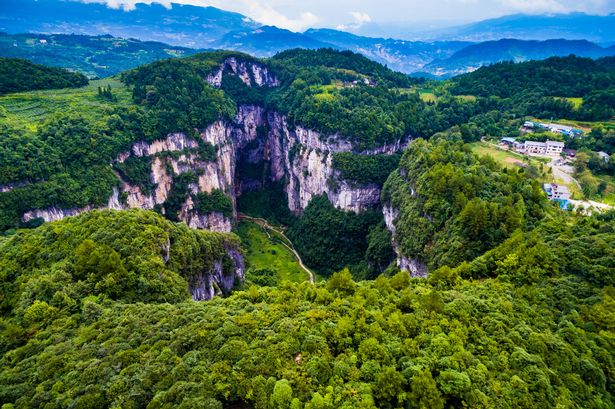
A whopping great big sinkhole in China that contains an ancient forest also has new, undiscovered animals in it, scientists have found.
The 630 foot deep sinkhole, with an ancient forest at its bottom, was discovered by Chinese scientists in the Guangxi Zhuang Autonomous Region of China last year.
A cave exploration team discovered the deep giant karst sinkhole in Leye County.
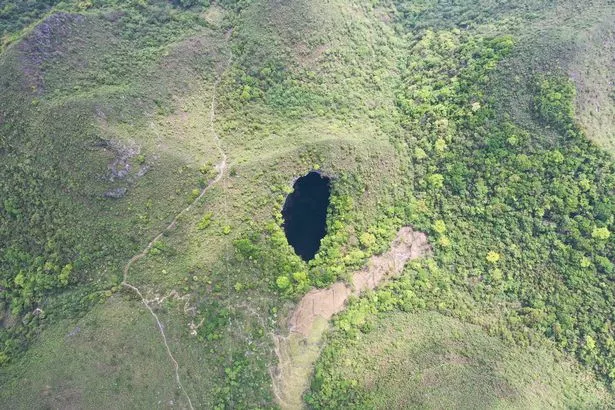
It was also found that the sinkhole actually contains three cave entrances in the chasm, as well as ancient trees 40 metres.
Zhang Yuanhai, a senior engineer with the Institute of Karst Geology of China Geological Survey, said the sinkhole, located near Ping’e village under Luoxi township, also measures 306 m in length, 150 m in width, with its volume exceeding five million cubic metres.
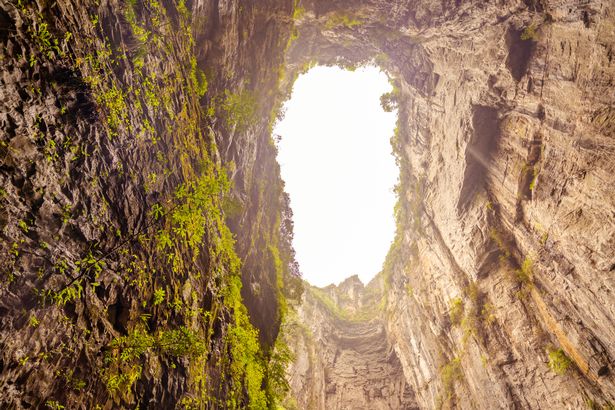
And it has now been announced that could contain animals never before seen by modern humans.
Yuanhai said: “I wouldn’t be surprised to know that there are species found in these caves that have never been reported or described by science until now.”
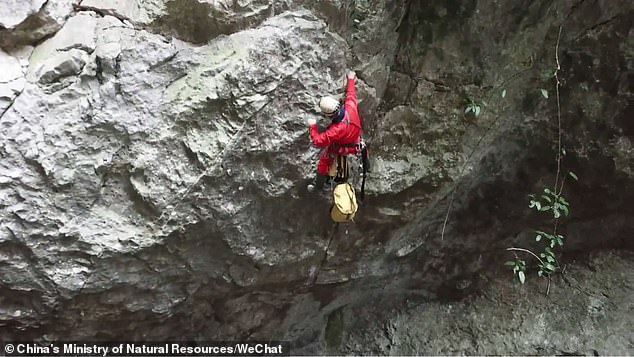
Although he didn’t go into any great detail about what they are, or if any discovery missions are in the works, he did expand on the three big caves in the wall.
He claims that they are the remains of the early evolution of the sinkhole.
The bottom of the sinkhole has a well-preserved primitive forest with trees growing at the bottom as well as dense shade plants which reach shoulder height.
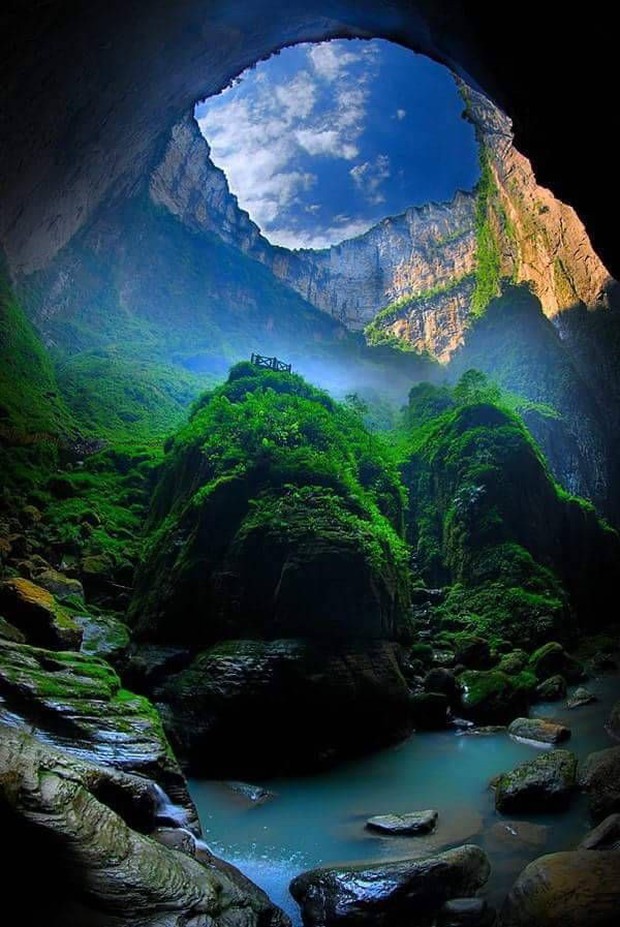
Giant sinkholes, also known as Tiankeng (heavenly pit) in Chinese, are dolines, or giant pits, with special geological features found in karst regions formed by repeated cave-ins.
They are mainly found in China, Mexico and Papua New Guinea.
The same researchers have previously discovered dozens of sinkholes in Northwest China’s Shaanxi province and a cluster of interconnected sinkholes in Guangxi.
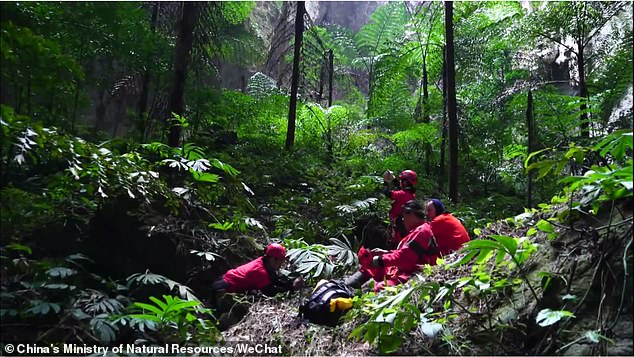
George Veni, executive director of the National Cave and Karst Research Institute (NCKRI) in the U.S, sister organisation of the China Geological Survey, said: “Not only do sinkholes and caves offer refuge for life, they are also a conduit to aquifers, or deep stores of underground water.
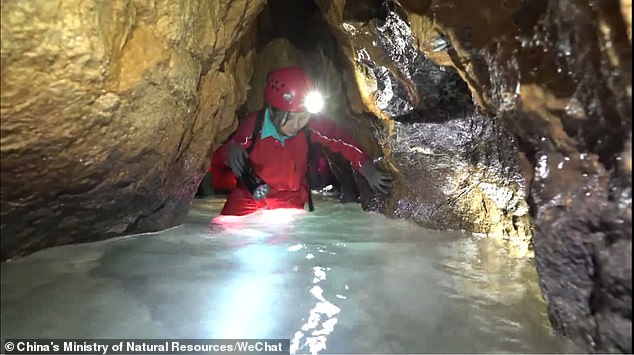
“Karst aquifers provide the sole or primary water source for 700 million people worldwide. But they’re easily accessed and drained — or polluted.
“They are the only types of aquifers that you can pollute with solid waste.
“I’ve pulled car batteries and car bodies and barrels of God-knows-what and bottles of God-knows-what out of the active cave stream.”
